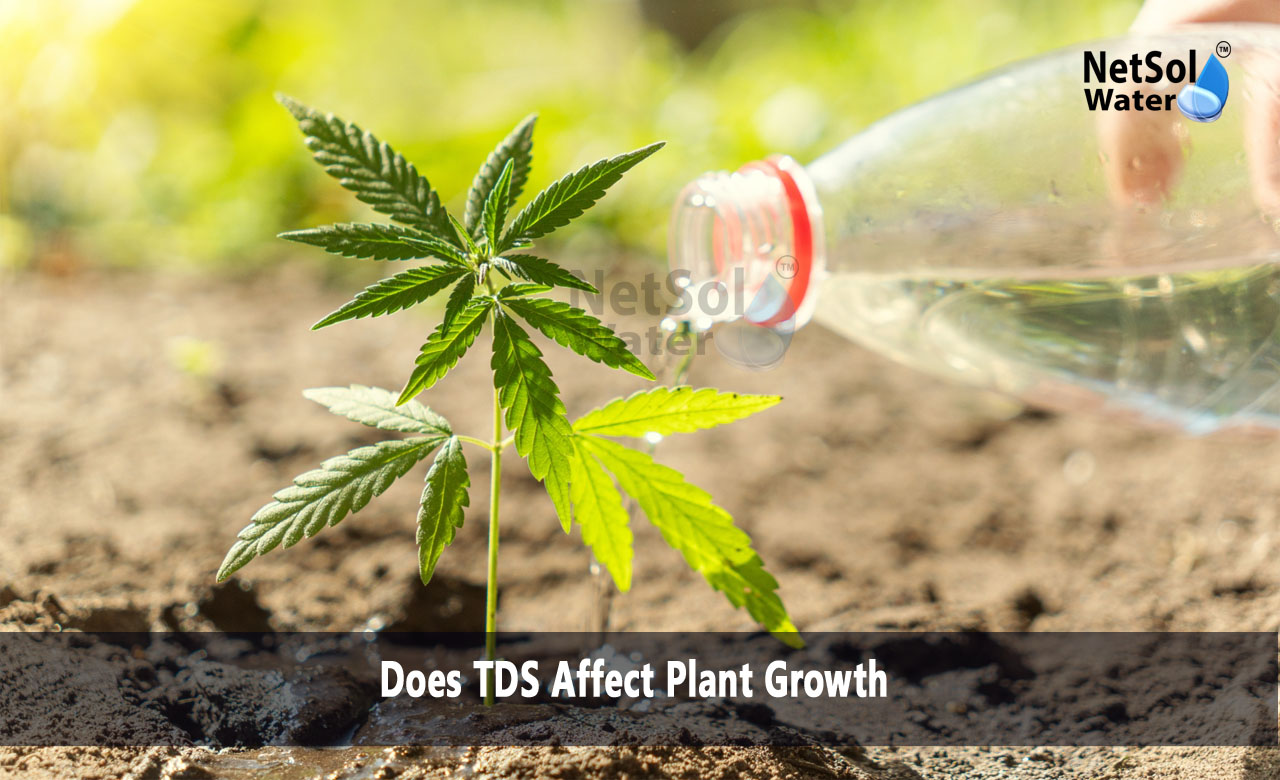Does TDS Affect Plant Growth?
Total dissolved solids or TDS describe the amount of dissolved minerals and salts in water. Gardeners and farmers ask about TDS every day because water quality shapes plant health and yield. High TDS can change how roots take up water and how nutrients move in the soil. Low TDS can mean a lack of essential minerals for steady growth. Understanding TDS helps growers choose the right water and adjust feeding to match crop needs.
TDS and measurement
TDS matters because it gives a simple view of what water contains. Let us have a look on some ways to read and think about TDS and how those readings work in practice.
What TDS means?
TDS measures dissolved solids in water in parts per million. The number comes from summing tiny charged particles that water holds. These particles include salts and minerals that come from soil and from water sources. Plants respond to those particles when they try to move water through their roots.
How TDS instruments work?
TDS meters read electrical conductance and convert that number to an estimate of dissolved solids. The device gives a quick snapshot for home gardens and for farms. A single reading can help growers decide if water needs treatment or if soils need adjustment.
Why readings vary?
Different wells, springs and municipal systems show different TDS levels. Rain water and filtered water usually show low TDS. Groundwater and some surface waters often show higher TDS. Seasonal changes can shift the number and growers should test regularly to track trends.
How TDS influences water uptake and nutrient balance?
Thismatters because roots sense the dissolved solids and then change how they move water and minerals. Let us have a look on some ways TDS changes root function and nutrient delivery.
Osmotic pressure and water stress
High TDS raises osmotic pressure in the root zone. Plants need to work harder to draw water when the outside water contains more dissolved particles. That extra work reduces growth and can slow leaf expansion and flower set.
Nutrient availability and competition
When TDS rises certain ions can crowd out others. That crowding can make a key nutrient harder for roots to absorb. For example excess sodium can limit potassium uptake and that effect will show in leaf colour and overall vigour.
Salt build up and root damage
Long term high TDS can lead to salt accumulation in soil. This salt can harm root cells and reduce root length and branching. Roots then explore less soil and the plant loses access to water and nutrients that it needs for steady growth.
Effects of TDS on different plant types
This area matters because each crop has a different tolerance for dissolved solids. Let us have a look on some crop groups and how they cope with TDS.
Leafy greens and herbs
Leafy greens show stress from moderate rises in TDS more quickly than woodier plants. These plants depend on steady water flow for quick leaf expansion. High TDS reduces leaf size and cuts yield over short time spans.
Fruit trees and shrubs
Fruit trees endure varied water quality because they have deeper roots that can access fresher zones. However prolonged exposure to high TDS will reduce fruit set and will change fruit quality. Trees show that effect in small leaves and delayed growth.
Hydroponic and container crops
Hydroponic systems need precise control of TDS because they hold a fixed nutrient solution. Small changes in TDS change nutrient ratios and that shift shows fast in plant appearance. Container crops also react quickly because the root zone volume stays small.
Managing TDS for healthy plant growth
Growers can manage TDS and lower harm while keeping needed minerals in balance. Let us have a look on some practical steps and tools that make management easier.
Testing and monitoring
Regular testing gives clear data that growers can use. A TDS meter and a simple log help reveal trends. Test in morning hours and after irrigation events to see how numbers change across the day and across seasons.
Water treatment options
Treatment options include blending high TDS water with low TDS water to reach a target level. Filtration and reverse osmosis remove many dissolved solids when a low TDS solution is necessary. Small scale growers can use simple filters while larger operations may use more advanced systems.
Soil management and leaching
If soil shows salt buildup growers can leach the root zone with extra fresh water to move salts lower. Choosing salt tolerant rootstocks and improving soil structure will help roots access water more easily. Adjusting fertiliser strength also helps when TDS reflects an excess of soluble feed.
Conclusion
TDS affect plant growth in clear ways that growers can measure and change. Water that holds too many dissolved solids reduces water uptake and alters nutrient balance. Plants then slow growth and lose yield. Careful testing and simple management steps will protect crops and will improve results over time. If you want help testing your water or if you need a plan to manage TDS for a garden or a farm please get in touch for more information or request a consultation.
Contact Netsol Water at:
Phone: +91-9650608473, Email: enquiry@netsolwater.com



